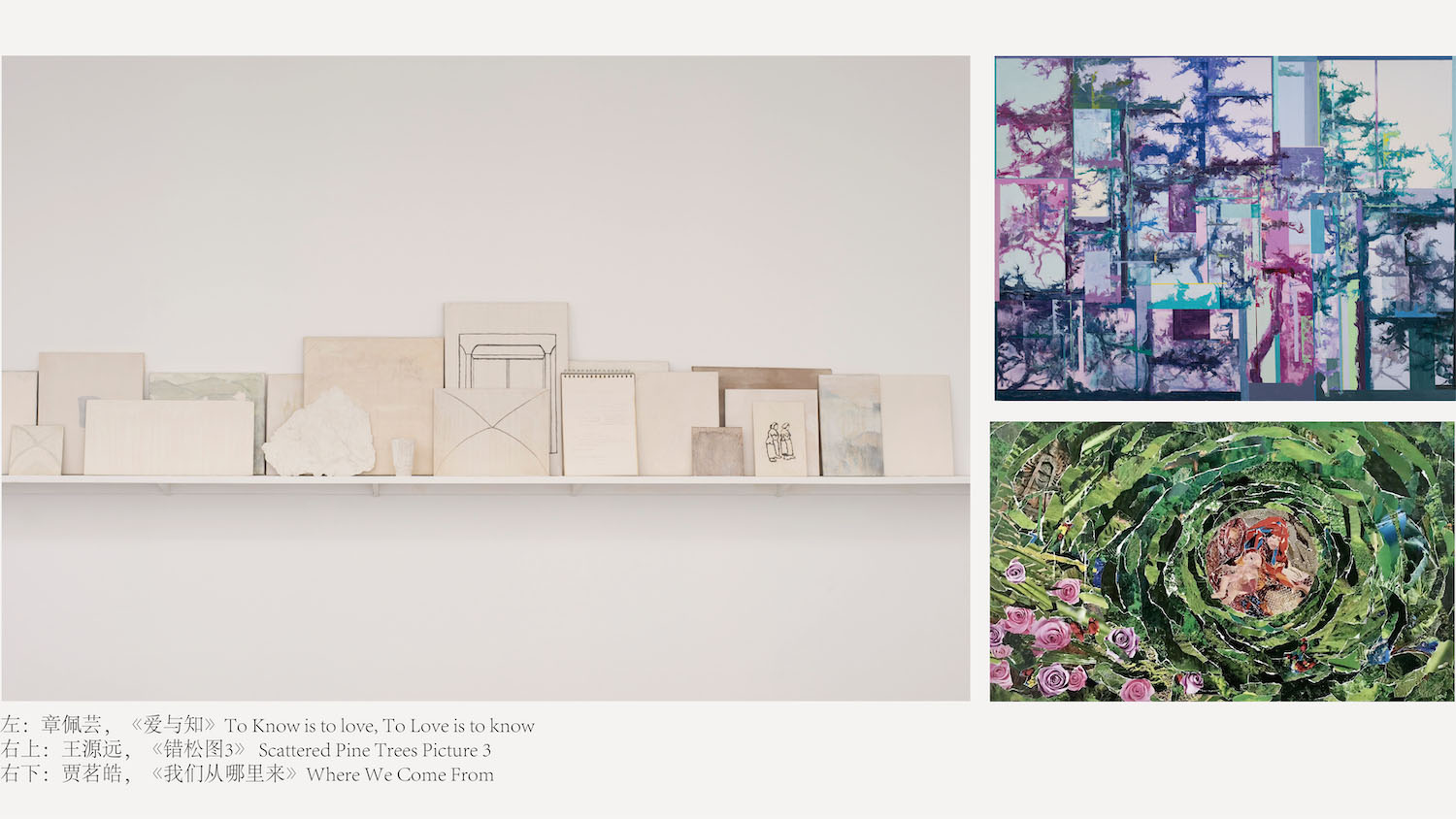绘画的理由——第五届Inter-Youth国际青年绘画展
Reasons to Paint-The 5th Inter-Youth Painting Exhibition
这次展览提及两个问题:“开始绘画的理由,坚持绘画的理由”。在今天这个时代去讨论“绘画”本身的问题,答案将永远滑动在一种正在进行的时态当中。在媒介迭代的技术背景下,绘画作为艺术家个人生命档案的意义将远远大于过去作为图像的传播学意义,所以关于“开始绘画的理由”各不相同也无需阐释。绘画就像一个工具一样,要考虑如何建立生活这个问题,当你决定要用绘画这个方式来表达的时候,它就已经跟艺术没有关系了,便时时刻刻在那里了。本次展览将呈现二十组艺术家的空间,他们以丰富的创作与研究为案例,分享心路历程,展示各自对于绘画课题的思索与实践。既有对真实生活和情绪的捕捉,也有对传统文化、民间艺术的继承创新,对历史、当代与未来的探索,与各种媒介和技术结合的尝试。每个人都呈现了他们开始绘画、坚持绘画的理由。
This exhibition addresses two questions: "The reasons to start painting, and the reasons to persist in painting." In today's era, discussing the essence of "painting" itself leads to answers that are perpetually in a state of flux. Against the backdrop of evolving media technologies, the significance of painting as a personal life archive for artists far surpasses its past role in the dissemination of images within the field of communication studies. Therefore, the diverse "reasons to start painting" vary widely and require no further elaboration. Painting, akin to a tool, necessitates consideration of how to construct one's life. Once you decide to express yourself through painting, it ceases to be solely about art and becomes an ever-present aspect of your existence. This exhibition presents the spaces of twenty artists, who, through their extensive creations and research as case studies, share their intellectual journeys and demonstrate their reflections and practices on the subject of painting. It encompasses the capture of real life and emotions, the inheritance and innovation of traditional culture and folk art, the exploration of history, the contemporary, and the future, as well as attempts to integrate various media and technologies. Each artist presents their reasons for starting and persisting in painting.
中国美术学院绘画艺术学院
Painting School of China Academy of Art
中国美术学院的前身是国立艺术院。1928 年,时任大学院长的蔡元培先生择址杭州西子湖畔,创立了第一所综合性的国立高等艺术学府——国立艺术院,揭开了中国高等美术教育的篇章。作为国内学科最完备、规模最齐整的第一所国立高等美术院校,中国美术学院在九十余年的发展历史中,数迁其址,几易其名,从国立艺术院、国立杭州艺术专科学校、国立艺术专科学校、中央美术学院华东分院、浙江美术学院到中国美术学院。这个过程中,始终交叠着两条明晰的学术脉络,一条是以首任校长林风眠为代表的“中西融合”的思想,一条是以潘天寿为代表的“传统出新”的思想,他们以学术为公器,互相砥砺,并行不悖,营造了利于艺术锐意出新、人文健康发展的宽松环境,成为这所学校最为重要的传统和特征。 中国美术学院作为研究教学型大学,始终站在时代艺术的前沿,以饱含振兴民族艺术的历史使命感和责任感,秉承“行健、居敬、会通、履远”的校训,倡导“多元互动和而不同”的学术思想,营造“品学通 艺理通 古今通 中外通”的人才培养环境,围绕“建设以东方学为特征的世界一流美术学学科,创立以艺术创造为内核、社会美育为担当的新人文教育体系”两大核心任务,更新校园,传承理念,拓展学科,重组院系,形成“五学科十+学院”的格局,建立以“劳作上手、读书养心”和“人民之心、美美与共”的实践教学体系,弘扬哲匠精神、构筑大学望境,培养品学通、艺理通、古今通、中外通的德艺双馨优秀人才。
The predecessor of China Central Academy of Fine Arts (CAA) is the National Art Academy. In 1928, Mr. Cai Yuanpei, who was serving as the President of the University at that time, chose a location by the West Lake in Hangzhou to establish the first comprehensive national institution of higher art education—the National Art Academy, thereby unveiling a new chapter in China's higher fine arts education. As the first national higher arts institution with the most complete disciplines and the largest scale, China Central Academy of Fine Arts has undergone several relocations and name changes in its more than 90 years of history. It has been known as the National Art Academy, the National Hangzhou Art School, the National Art School, the East China Branch of the Central Academy of Fine Arts, Zhejiang Academy of Fine Arts, before finally becoming the China Central Academy of Fine Arts. Throughout this journey, two clear academic threads have always been intertwined: one is the "integration of Chinese and Western art" represented by the first president Lin Fengmian, and the other is the "innovation within tradition" represented by Pan Tianshou. They used academia as a public tool, encouraged and inspired each other, and pursued parallel paths without conflict, creating a relaxed environment conducive to bold artistic innovation and the healthy development of humanities. This has become the most important tradition and characteristic of the academy. As a research and teaching university, China Central Academy of Fine Arts has always stood at the forefront of contemporary art, embracing a strong sense of historical mission and responsibility to revitalize national art. Adhering to the school motto of "Vigorously advancing, Respectfully dwelling, Comprehensively connecting, Far-reachingly fulfilling," the academy advocates the academic idea of "pluralistic interaction while maintaining differences" and fosters a talent-cultivating environment where "students excel in character and learning, understand the principles of art, and have a thorough knowledge of both ancient and modern, Chinese and foreign cultures." Focusing on the two core tasks of "establishing world-class fine arts disciplines characterized by Oriental studies and creating a new humanistic education system centered on artistic creation and social aesthetic education," the academy has renovated its campus, transmitted its ideals, expanded its disciplines, reorganized its departments, and formed a structure of "five disciplines and more than ten schools." It has established a practical teaching system based on the principles of "learning through practice and nurturing the mind through reading" and "serving the people with a shared aesthetic appreciation," promoting the spirit of craftsmanship and building a visionary university to cultivate talents of both moral and artistic virtues who excel in character and learning, understand the principles of art, and have a thorough knowledge of both ancient and modern, Chinese and foreign cultures.
